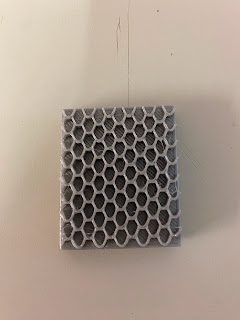Identity
Identity
Identity is the way we perceive and express ourselves and it includes factors and conditions that we a born with. Our identity however can change and evolve throughout our lives, through our experiences and decisions, or, our experiences and decisions can be directly affected by our identities, such as how we chose our friends, clothing styles and even political beliefs. Many artists will use their work to express, explore and question our ideas about our identity.
Eve 3.6, Jabbar Muhammed
This painting is part of a much larger series by Muhammed in which he 'explores issues beyond the body alone and could be considered existential'. Eve 3.6 depicts a woman showing two faces, one calm, the other anxious. Along with the bright colours and minimal shading, I think it conveys the internal turmoil that we face daily. The constant battle between what we feel on the inside vs what we show to the world.Girls Head, Cathy Lu
Lu explores concepts of identity such as culture and gender, often pulling from her own experiences. She was born into a Chinese family, and grew up in Miami, Florida within a community that was mostly Cuban 'exiles' and immigrants. She has stated that it was 'strange trying to understand American culture while growing up in a Chinese family and surrounded by Cuban immigrants'. She also isn't comfortable with the phrase Asian American as she was born in America, so she sees herself as just American, but she also understands that others will never see her that way. She says that people are surprised by the way she looks and either assume she can or can't speak Chinese or English, stating that people will assume she works at her local laundromat, when she is there to simply wash her clothes.Her watercolours (including this piece) are based off of '100 Boys Playing', a genre in traditional Chinese painting where boys are depicted to be playing with objects to foreshadow their future successes as adults. As the name suggests however, girls are not represented in this, so she made this series to give space to girls and their aspirations. She also likes to 'fragment' the girls physically, in order to portray ideas of multiple identities, goals and traits.
I like this series as not only is she depicting girls, and highlighting that they may not be portrayed in art as often as boys, but she is also trying to get the audience to question what they see. If people are not familiar with the references to '100 Boys Playing', then they tend to not understand what she is commenting on, which is gender and cultural identity. But without this knowledge, they may see her work from across the room and be drawn to the colours, only to come closer and see violent or sexual imagery, which then leads them to question why and what the girls are doing. This opens up the room for conversation which I think is so important for art.





Comments
Post a Comment